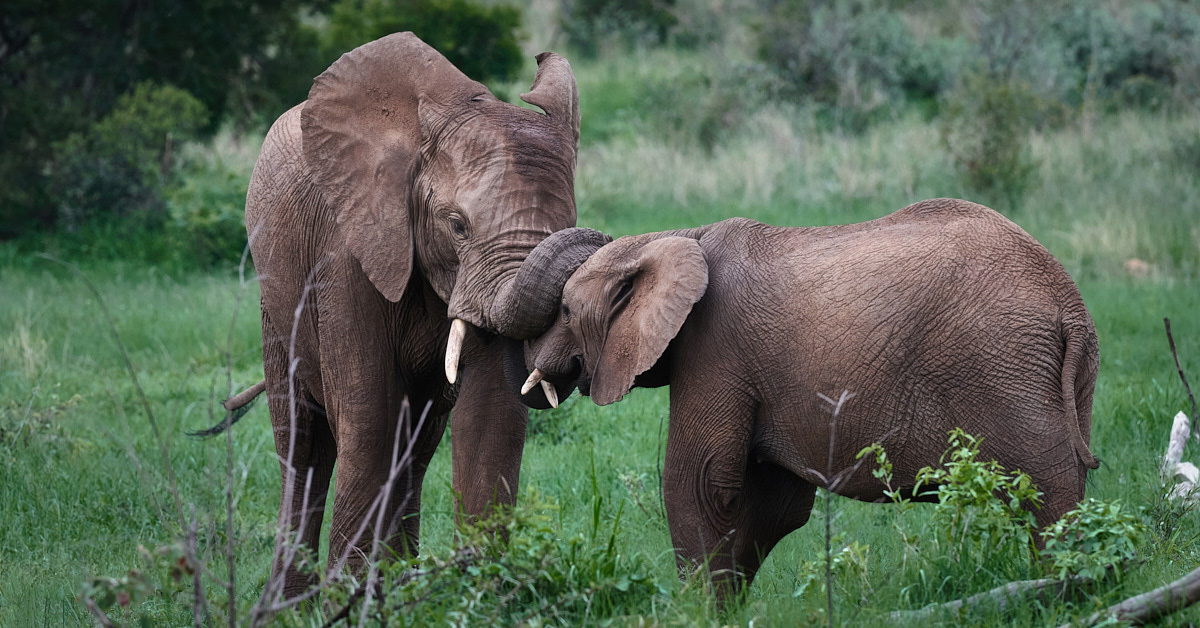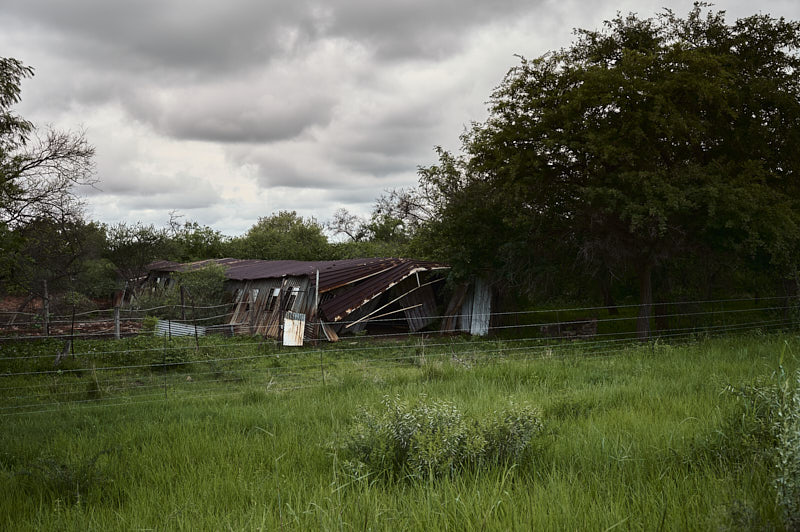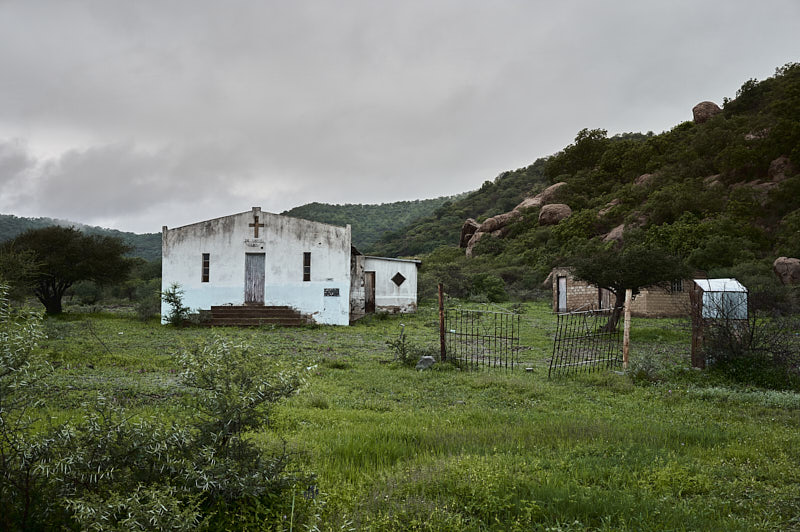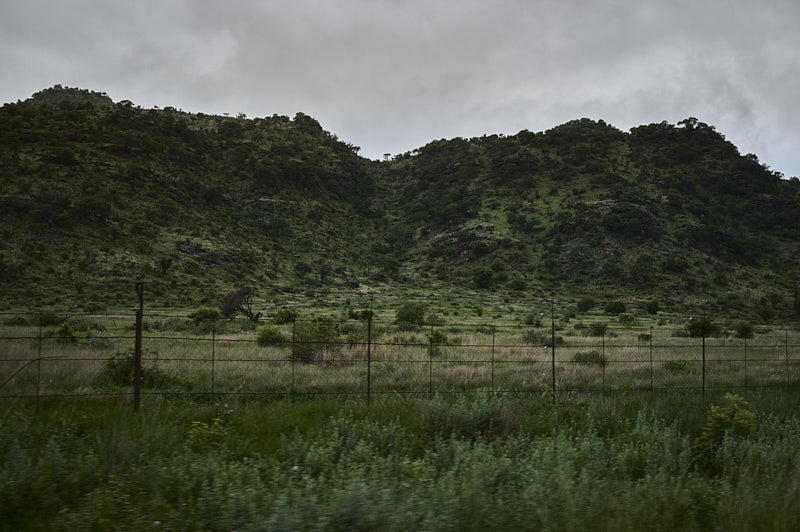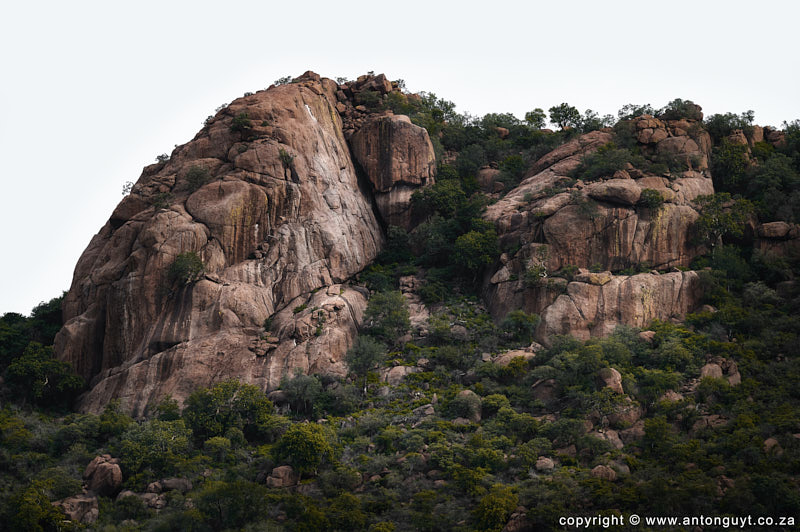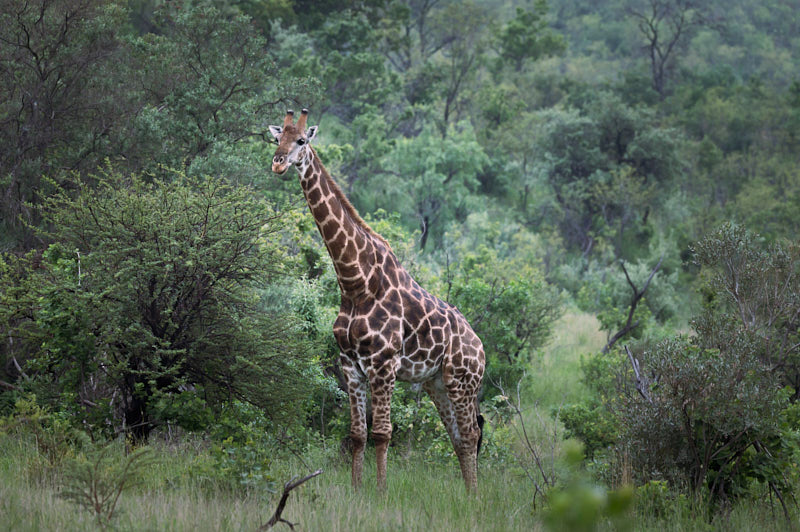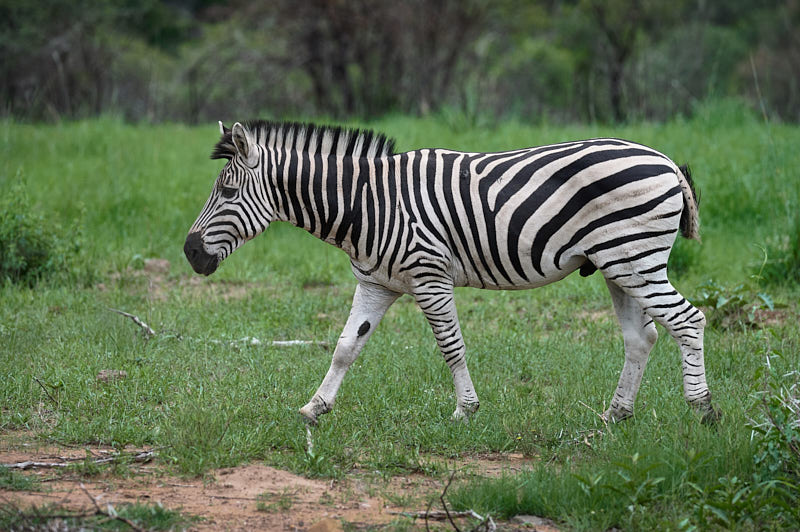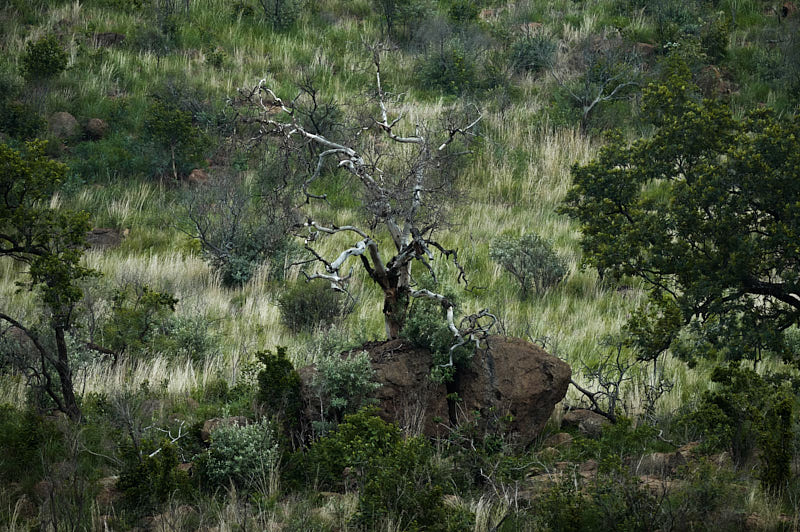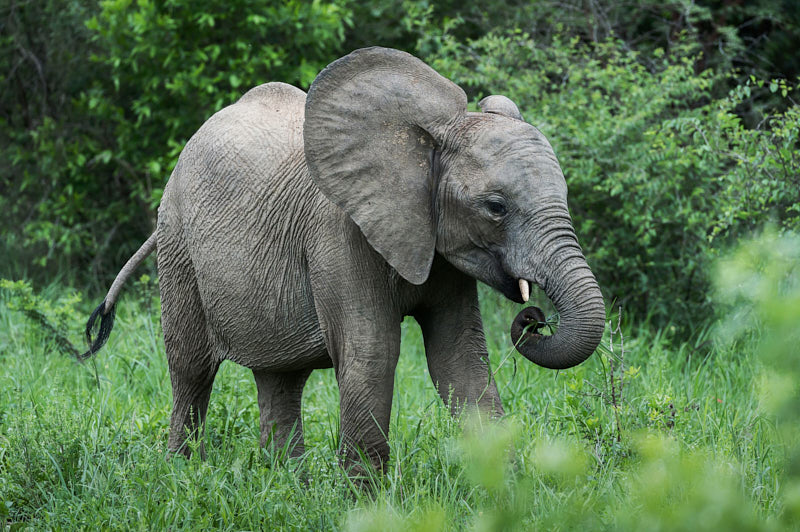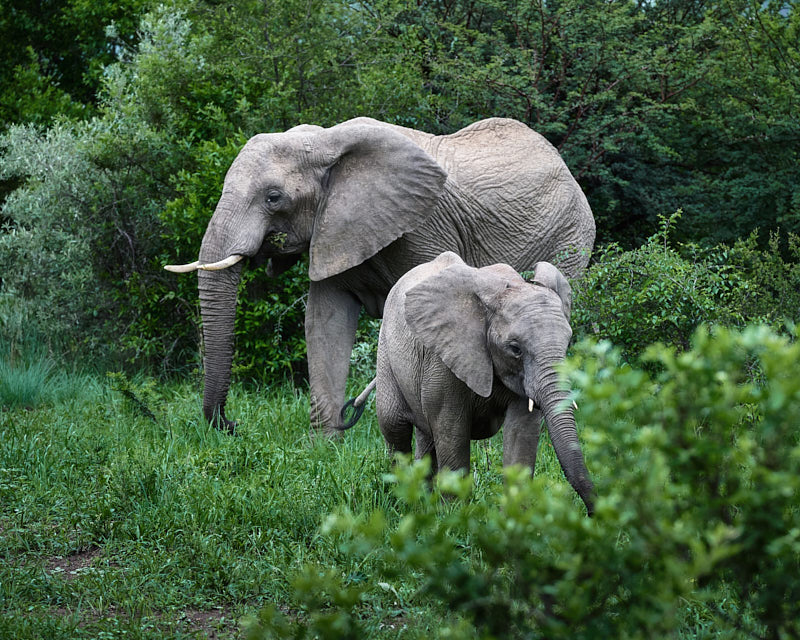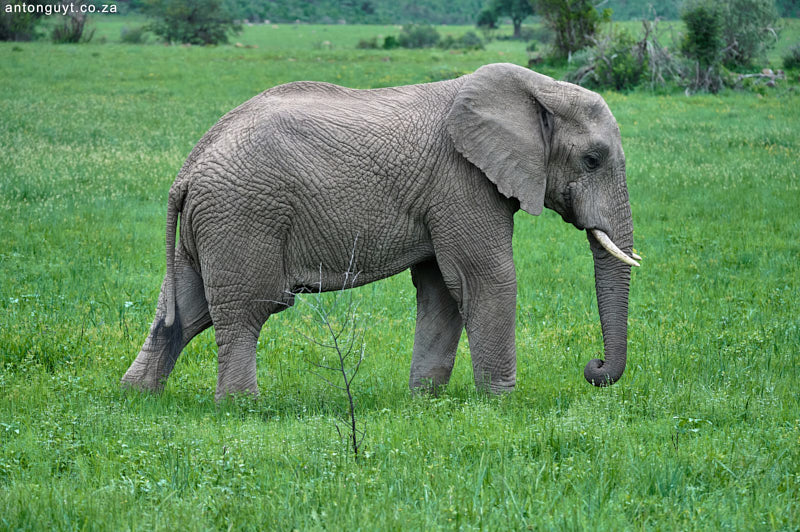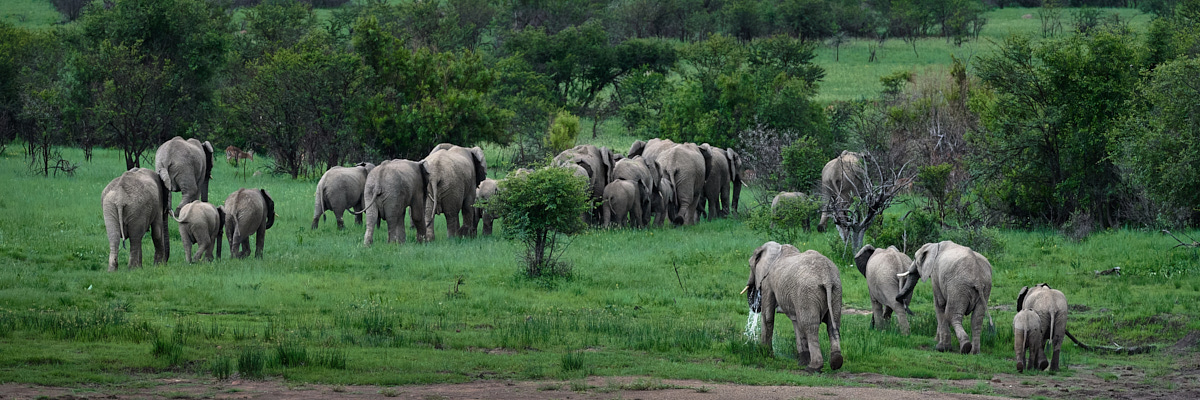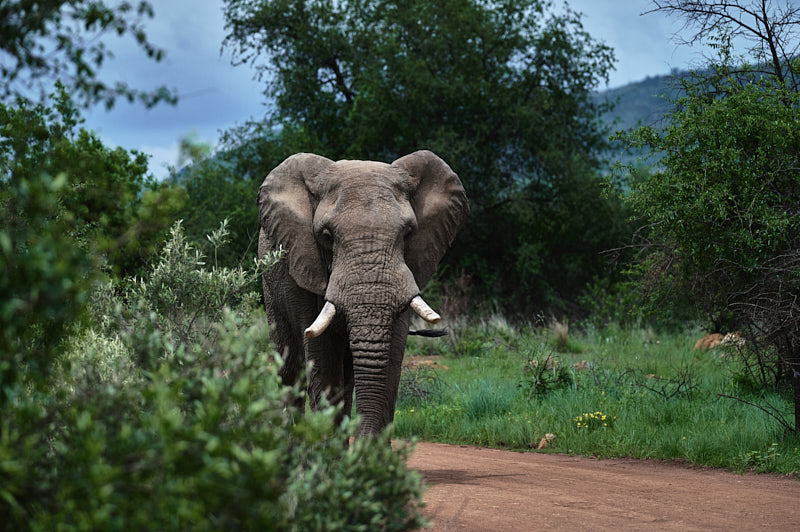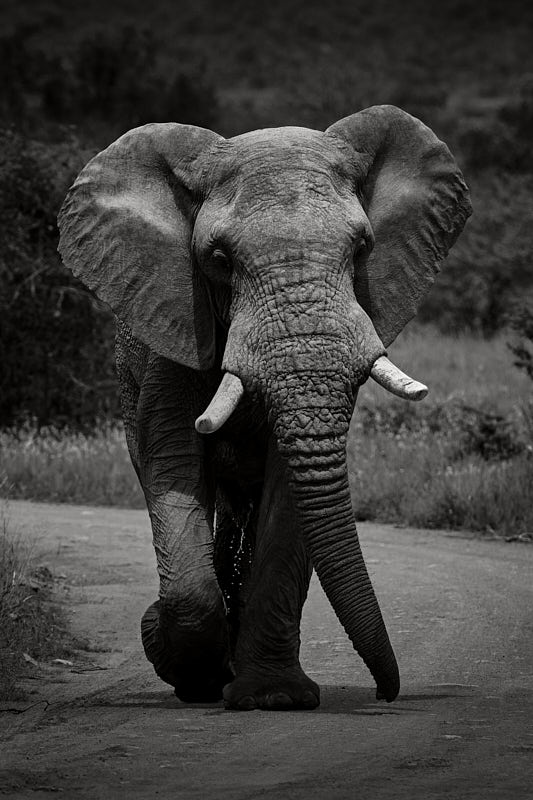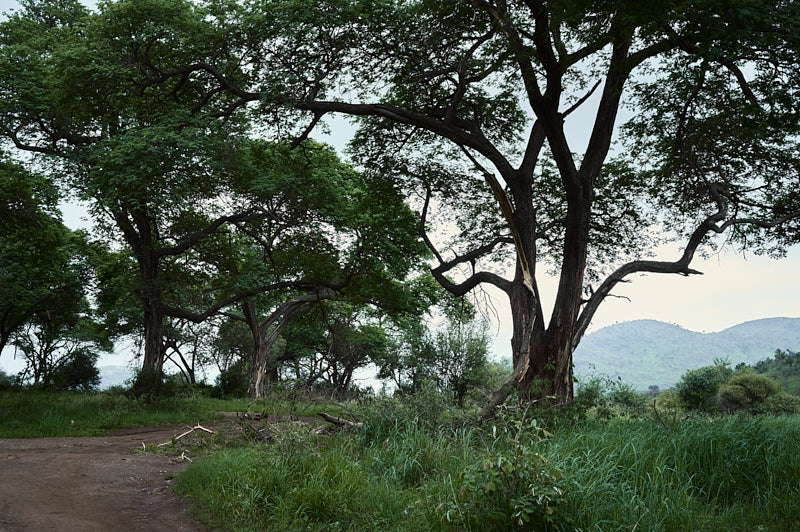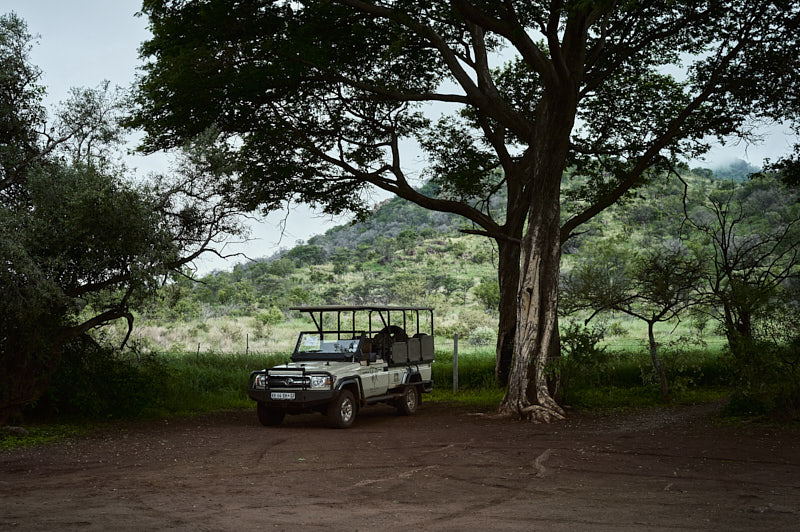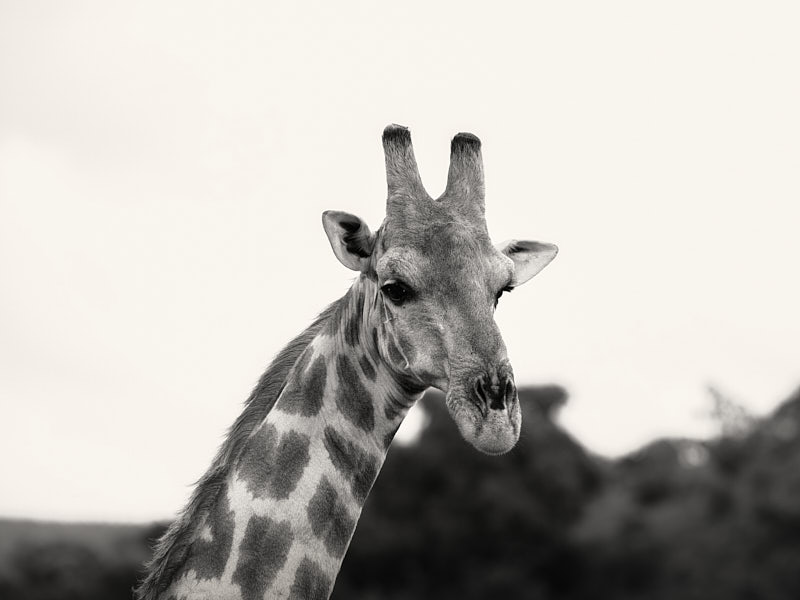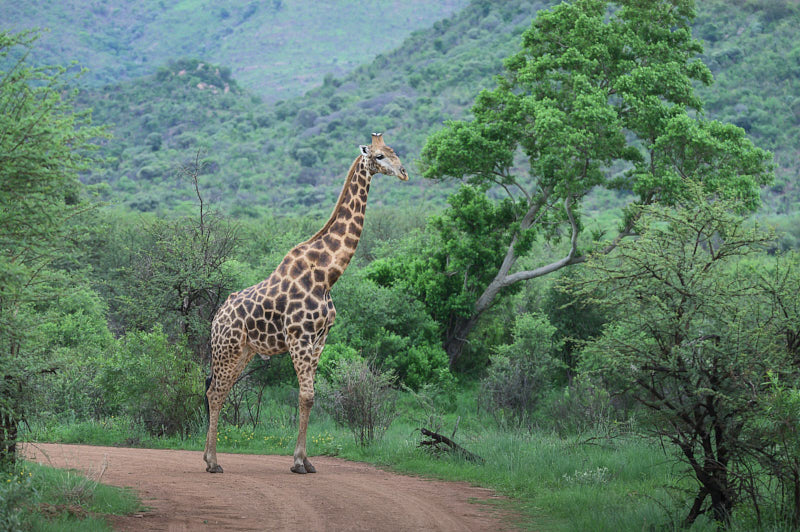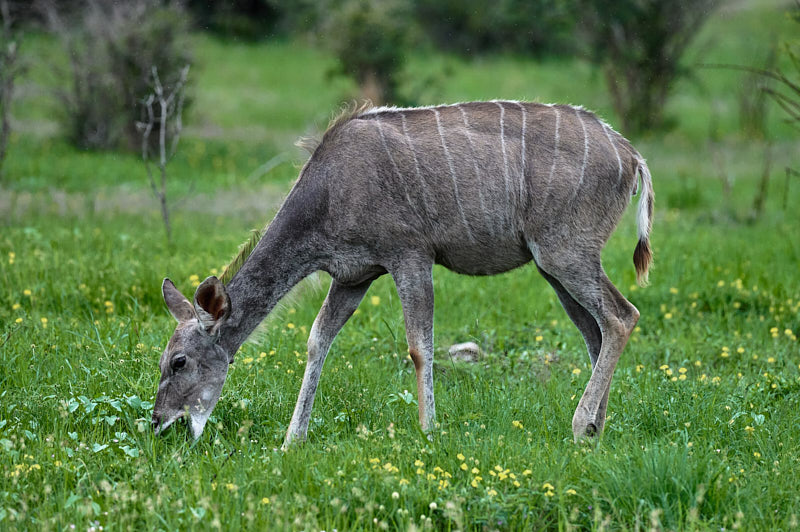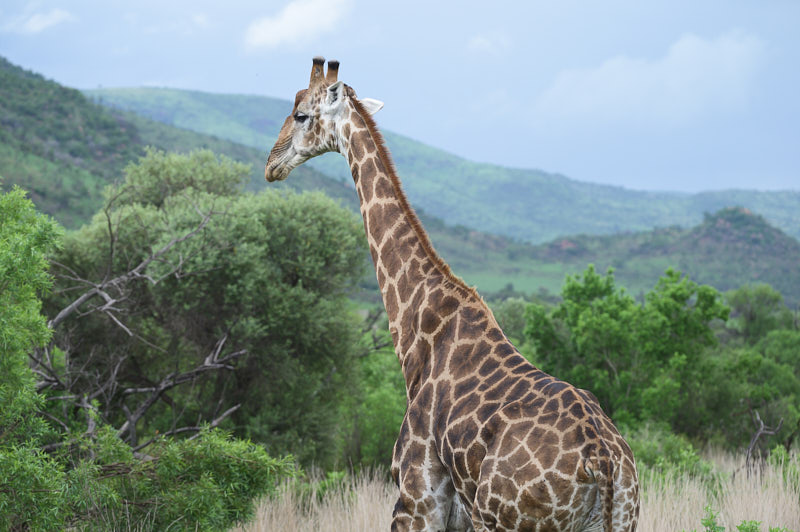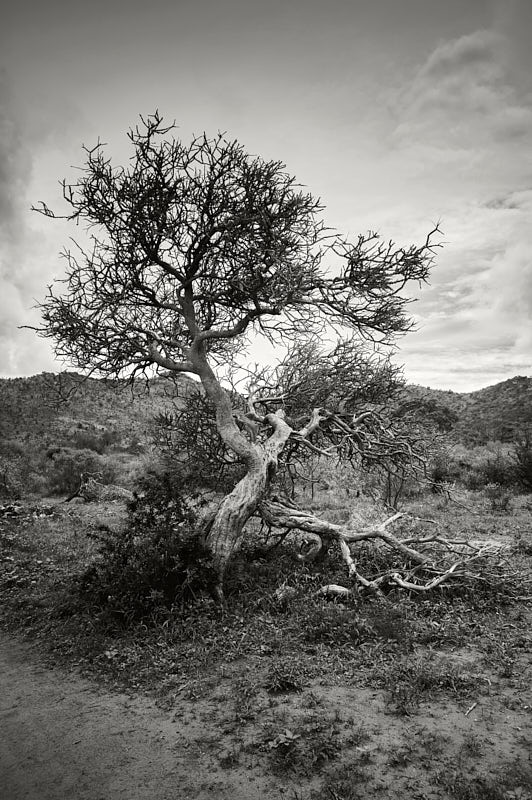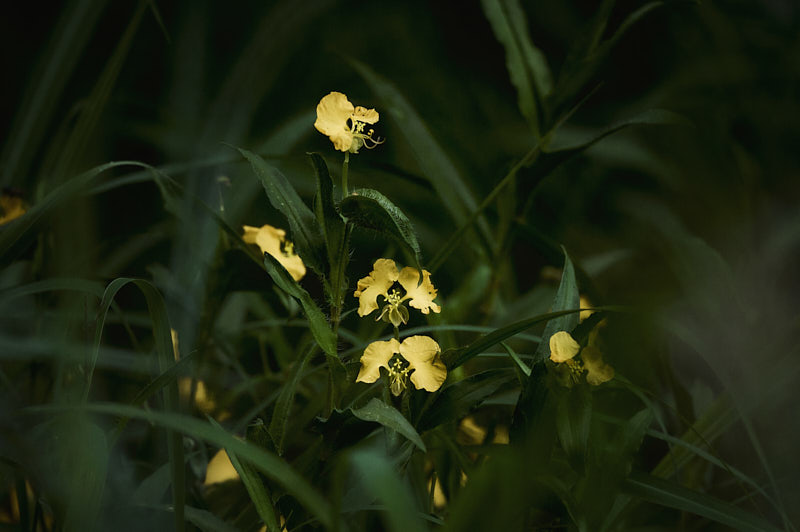Table of Contents
The Road to Pilanesberg: Rural Scenes and Shifting Landscapes
I was on my way to Pilanesberg National Park, one of South Africa’s renowned wildlife destinations, for a wildlife photography experience. Through the car window, the scenery was lush and vibrant — tall grass and trees flourished after recent rains. Everything was painted in different shades of green, vivid beneath the soft light of an overcast sky.
I noticed the details of the passing landscape. Abandoned buildings stood as silent reminders of lives once lived, slowly being reclaimed by nature. Telephone poles without cables dotted the roadside, while an endless variety of trees and grasses swayed in the breeze. Occasionally, a small airfield broke the monotony. Then, the platinum mines began to appear on the right. In 1924, a significant platinum deposit had been discovered here, forever marking the region’s history.
People, Places & Stories Along the Road to Pilanesberg
Along the journey toward Pilanesberg Game Reserve, I observed people and scenes that made me reflect on life’s path. I passed a bus full of travellers, each carrying their own story. Some were joyful, others perhaps burdened by sorrow — all shaped by memories that linger. It made me wonder about the roads we take, the stories we share, and those that remain untold.
A man on a bicycle caught my eye. His load was simple — a few poles strapped to the frame, the clothes on his back, and whatever else he could carry. Only the essentials for the road ahead. There was a quiet resilience in the way he pedalled forward.
Stopping for a quick coffee break at a roadside garage, I stepped out into thick, humid air — a stark contrast to the cooler climate I had left behind. The coffee was unremarkable, as one might expect from a roadside stop, but it was a welcome pause. Across the road, towering transport trucks sat beneath even taller trees — dwarfed by the immensity of nature.
Back on the road, the scenery shifted. Small communities lined both sides — homes built from scrap metal, with a single sheet of metal acting as a door and one or two windows. Each structure was unique. Some had fenced gardens, others had abandoned vehicles resting in the yard. A few fortunate ones had brick houses, some even two stories tall, with fences, dogs, and chickens scratching the ground.
The people were strikingly friendly. Their smiles stood in contrast to their surroundings. Despite modest material wealth, they seemed rich in heart and spirit. Along the roadside, life unfolded in its simplest form. One person styled hair, another repaired cars. Small grocery shops stood with hand-painted signs — no digital billboards here, just brushstrokes and necessity.
Further along, I spotted a small white church nestled against the backdrop of the Pilanesberg mountains. A cross hung above a wooden door, flanked by two windows. A faded sign read The United Church. There was no fence, only scattered thorn bushes and a rusting wire gate long since fallen into disuse. It stood alone, framed by rocks and sky — a quiet place of hope for those who entered.
Entering the Pilanesberg: Mountains and Bushveld Landscape
These ancient formations, remnants of a long-extinct volcano that last erupted 1.2 billion years ago, stood as a testament to Earth’s deep history. The landscape transformed into the classic African bushveld I knew and loved. Pilanesberg National Park, located in South Africa’s North West Province, remained one of the most breathtaking wildlife destinations — rich in biodiversity and dramatic scenery.
Black Rhino Reserve: Staying at the Pilanesberg Private Lodge
After another twenty minutes of driving, I arrived at the entrance to the Black Rhino Reserve for my stay at Pilanesberg Private Lodge, a peaceful safari lodge nestled inside the Pilanesberg National Park. A boomed gate marked the start of the property, leading to a gravel road winding toward the chalets.
The accommodations were lovely — comfortable beds, ample storage, and a bathroom with both indoor and outdoor showers. Taking a warm outdoor shower after a day in the African bush, under a canopy of stars, must have been magical — though clouds veiled them during my visit. The tranquillity was unmatched, with birds and nocturnal animals filling the night air with their calls.
Pilanesberg Wildlife Safari: Elephants, Rhinos, and More
That first afternoon, after settling in at the lodge, I headed out on a game drive in the heart of Pilanesberg National Park. The overcast sky kept the climate cooler — still humid and stuffy — perfect for wildlife activity. It felt good to be back in the South African bushveld.
I saw majestic elephants — some playing, others showing affection — with younger ones protected closely by the herd. Alongside them, I spotted rhinos and buffalo, iconic members of the Big 5 roaming the vast wilderness.
That night, after dinner and a warm shower, I tried to sleep but couldn’t. I closed my eyes and listened to the sounds of the African night. Somewhere in the distance, baboons — perhaps frightened by a leopard — stirred up a racket. Their alarm calls rose above the gentle sound of rain falling softly through the trees.
Bushveld Morning Game Drive: Giraffes, Elephants & Fog
The next morning, I woke before dawn to prepare for another safari game drive. It was still dark and cloudy. After gathering my thoughts, I brewed a cup of coffee and sat on the stoep, listening to the dawn chorus of birds. Bit by bit, the bushveld revealed itself.
This drive was longer than the previous one — lasting nearly half a day. The rains had left the roads slick and muddy, but the landscape was breathtaking. Low-hanging clouds and fog hugged the hills. As the soft light filtered through the peaks, the mist gave everything a dreamlike quality.
During the drive, I saw giraffes, impalas, zebras, kudu, elephants, and a variety of bird species. One especially memorable moment was encountering an elephant bull in musth. His commanding presence and behaviour served as a vivid reminder of the power and grace of these giants.
On the way back, we stopped at a place called Apiesdoring (Monkey Thorn) — a resting spot named after the trees surrounding the area, where guests could stretch their legs.
One particularly memorable moment was encountering an elephant bull in musth. His assertive behaviour, a vivid reminder of the power and grace of these magnificent creatures.
On the way back to the lodge, after many hours of driving, we stop at a well-known spot called Apiesdoring (‘Monkey Thorn’), named after the apiesdoring trees surrounding the area where guests can step out of their vehicles.
Final Reflections on a Pilanesberg Safari Experience
My brief stay in Pilanesberg National Park was unforgettable. As a photographer, I treasured the opportunity to capture its wild beauty — from landscapes shrouded in mist to moments of connection between animals.
If you’re drawn to wildlife, bush getaways, or African safari experiences, the Pilanesberg offers it all — elephants, giraffes, rhinos, and the untamed quiet of the South African bushveld. I left with cherished memories and a memory card full of moments I won’t forget.
Gear used for wildlife photography in Pilanesberg
- Nikon Z6ii & Nikon Z 180-600mm f/5.6-6.3 VR Lens
- Nikon D810 & Nikon 70-200mm f/2.8G ED VR II
If you’d like to see more of my wildlife photography, view my Wildlife Gallery.

